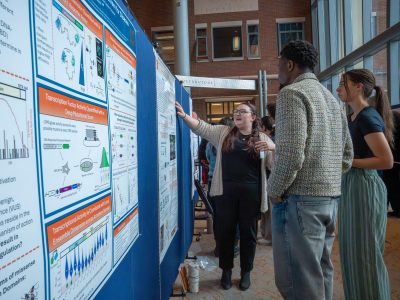Hundreds of millions of light-years away in a distant galaxy, a star orbiting a supermassive black hole is being violently ripped apart under the black hole’s immense gravitational pull. As the star is shredded, its remnants are transformed into a stream of debris that rains back down onto the black hole to form a very hot, very bright disk of material swirling around the black hole, called an accretion disc. This phenomenon – where a star is destroyed by a supermassive black hole and fuels a luminous accretion flare – is known as a tidal disruption event (TDE), and it is predicted that TDEs occur roughly once every 10,000 to 100,000 years in a given galaxy.

With luminosities exceeding entire galaxies (i.e., billions of times brighter than our sun) for brief periods of time (months to years), accretion events enable astrophysicists to study supermassive black holes (SMBHs) from cosmological distances, providing a window into the central regions of otherwise-quiescent – or dormant – galaxies. By probing these “strong-gravity’’ events, where Einstein’s general theory of relativity is critical for determining how matter behaves, TDEs yield information about one of the most extreme environments in the universe: the event horizon – the point of no return – of a black hole.
TDEs are usually “once-and-done” because the extreme gravitational field of the SMBH destroys the star, meaning that the SMBH fades back into darkness following the accretion flare. In some instances, however, the high-density core of the star can survive the gravitational interaction with the SMBH, allowing it to orbit the black hole more than once. Researchers call this a repeating partial TDE.
A team of physicists, including lead author Thomas Wevers, Fellow of the European Southern Observatory, and co-authors Eric Coughlin, assistant professor of physics at Syracuse University, and Dheeraj R. “DJ” Pasham, research scientist at MIT’s Kavli Institute for Astrophysics and Space Research, have proposed a model for a repeating partial TDE. Their findings, published in The Astrophysical Journal Letters, describe the capture of the star by a SMBH, the stripping of the material each time the star comes close to the black hole, and the delay between when the material is stripped and when it feeds the black hole again. The team’s work is the first to develop and use a detailed model of a repeating partial TDE to explain the observations, make predictions about the orbital properties of a star in a distant galaxy, and understand the partial tidal disruption process.
To read the full piece, visit thecollege.syr.edu.


